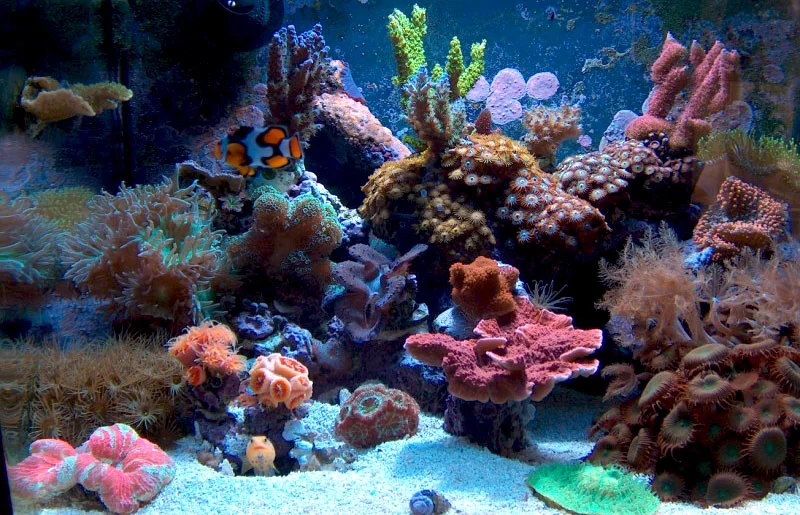Stunning 29-Gallon Reef Tank – basser1's TOTM | NanoReef

Tank Specifications
Volume: 29 Gallons / 109 Liters
Dimensions (L × W × H):
20.0" ×
20.8" ×
19.3"
50.8cm ×
52.7cm ×
48.9cm
Equipment List
- Salt: DTs
Frequently Asked Questions
How should I set up my BioCube 29 gallon tank for optimal performance?
To enhance the performance of your BioCube 29 gallon tank, ensure you have a high-quality lighting system. A common upgrade includes a retrofit hood with a 150W DE bulb, combined with actinic bulbs for coral growth. Maintain proper water flow using upgraded circulation pumps, like the Rio 6HF, paired with devices like a TUNZE Nano-Stream. Implement a protein skimmer such as the SapphireAquatics BC29R for effective waste removal.
What kind of filtration system should I use in my reef tank?
A good filtration system for a reef tank includes at least 25 lbs. of live rock and a 4-inch deep sand bed. Additionally, using filter pads and products like Chemi-Pure can help maintain high water quality. Regular testing of water parameters at your local fish store is crucial.
How can I choose the right corals for my tank?
Choosing corals for your tank involves considering their light and flow requirements. For a mixed reef like I have, include both SPS (like ORA Green Slimer and Blue Tort) that thrive in strong lighting and flow, and LPS (like Duncan Coral) that prefer moderate conditions. Soft corals can also add diversity but ensure you balance the requirements of all species.
What is the best way to feed and maintain corals in my reef tank?
Feed corals daily with appropriate foods such as DTs' Oyster Eggs and specific frozen foods like P.E. Mysis. Additionally, maintain optimal water parameters by dosing with a quality 3-part system (Ca, Alk, and Mg) as needed. Regular water changes of about 5 gallons weekly will also help keep nutrients and parameters in check.
What are some common issues in a reef tank and how can I manage them?
Common issues in a reef tank include algae outbreaks and flatworms. To manage these, maintain healthy water parameters through regular testing and water changes. For hair algae, regularly clean the glass, increase water flow, and ensure proper nutrient levels. Introduce cleanup crews like hermit crabs or snails to help mitigate algae. For flatworms, consider using a flatworm exit treatment and increase water circulation.
How can I maintain stable water parameters in my reef tank?
To maintain stable water parameters, regularly test your water for calcium, alkaline, magnesium, and nitrate levels. Perform regular water changes of about 5 gallons weekly to dilute any accumulative toxins. Additionally, avoid overfeeding your fish and corals, as excess waste can lead to parameter fluctuations.
What types of fish and invertebrates are suitable for a 29 gallon reef tank?
In a 29 gallon reef tank, select smaller species of fish, such as a pair of Picasso Clownfish or a single Blue Spot Jawfish, which are visually appealing and compatible with corals. For invertebrates, consider adding species like Blood Red Fire Shrimp, Emerald Crabs, and a variety of snails to maintain tank health and aesthetics.
How should I feed my fish and invertebrates?
Feed your fish a varied diet consisting of Hikari Frozen Brine Shrimp, P.E. Mysis, and marine flake foods with garlic. Be cautious not to overfeed; a small feeding in the morning and evening is ideal. For invertebrates, ensure they receive food like finely chopped meaty foods or specialized formulations for clams and shrimps.